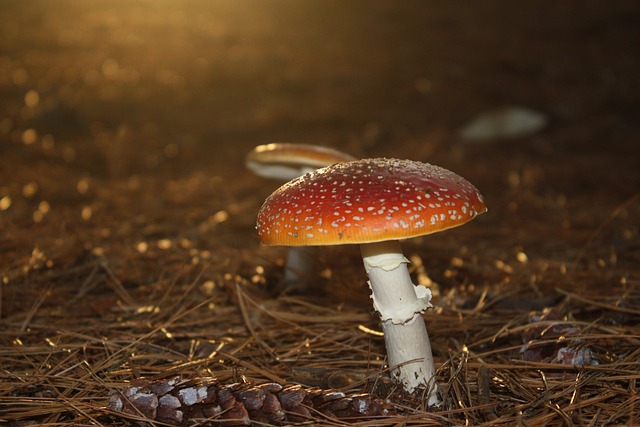The Amanita muscaria, or Fly Agaric, is a historical and culturally significant mushroom with psychoactive properties due to compounds like psilocybin. While used ceremonially in various cultures, it requires caution due to potency and unpredictable effects. Responsible consumption involves "set and setting," while its medicinal potential is explored for mental health disorders and neurological conditions. Despite allure, recreational use carries risks and long-term effects are unknown, emphasizing the need for informed decision-making regarding Amanita Muscaria edibles.
“Uncover the enigmatic world of mind-altering substances, with a specific focus on the fascinating plant, Amanita muscaria. This article delves into the historical and cultural significance of this mushroom, exploring its unique biochemical composition and edible properties. From ancient rituals to modern research, we dissect the active compounds that make Amanita muscaria both captivating and potentially dangerous. Learn about its safety measures, therapeutic applications, and risks, offering a comprehensive guide to understanding these mind-altering effects.”
Understanding Mind-Altering Substances: A Brief Overview
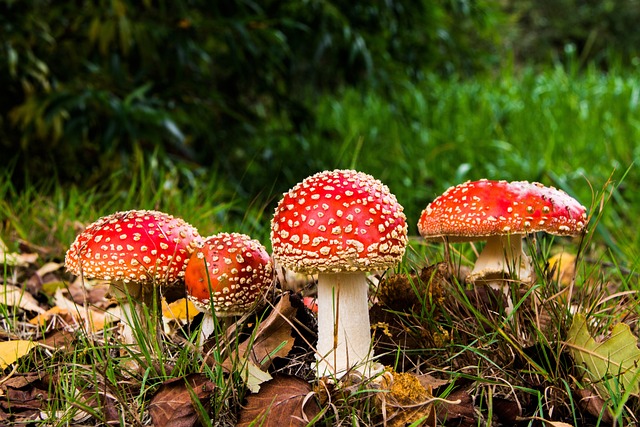
Mind-altering substances have been a part of human history for centuries, used in rituals, spiritual practices, and for their psychoactive effects. These substances work by interacting with our nervous system, altering brain function, and changing perception, mood, and behavior. One well-known example is Amanita muscaria, commonly known as Fly Agaric or Magic Mushroom, which contains the psychoactive compounds psilocybin and psilocin.
The edible Amanita muscaria has been used in various cultures for its mind-altering properties, often in ceremonial settings. Its effects can include heightened sensory perception, altered time perception, and profound emotional experiences. However, it’s crucial to emphasize that these substances should be treated with respect and caution due to their potency and unpredictable nature. Responsible use often involves set and setting, where the user is prepared mentally and surrounded by a safe, supportive environment.
The Role of Amanita Muscaria in Cultural and Historical Contexts
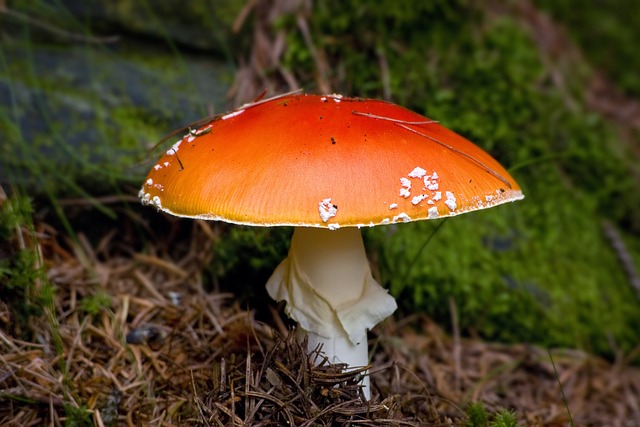
The Amanita muscaria, commonly known as the Fly Agaric, has played a significant role in various cultural and historical contexts throughout history. This striking mushroom, with its vibrant red cap and white spots, is not only visually captivating but also holds deep symbolic meaning in many societies. In ancient times, it was revered for its medicinal properties and used in ritualistic practices by indigenous tribes worldwide. These cultures recognized the Amanita muscaria as a powerful entity capable of altering consciousness and facilitating spiritual connections.
In European folklore, the Fly Agaric is often associated with magic and witchcraft, adding to its mystique. Its presence in art, literature, and folk traditions highlights the mushroom’s cultural significance. Interestingly, while some considered it a symbol of evil and madness, others viewed it as a sacred ingredient for mystical experiences. The Amanita muscaria has also been explored as an edible mushroom in culinary circles, where its unique flavor and texture have intrigued chefs and food enthusiasts alike.
Biochemical Composition and Active Compounds of Amanita Muscaria
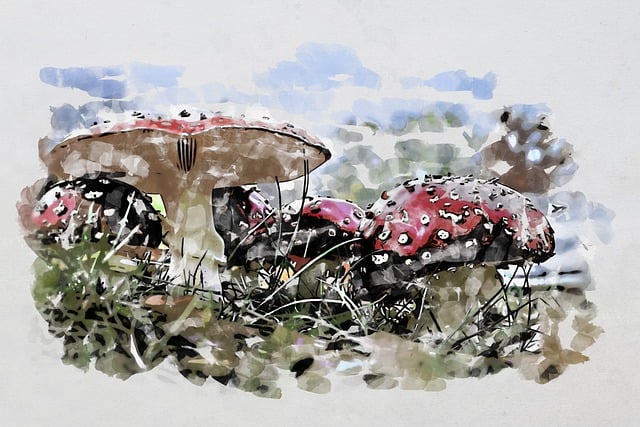
The Amanita muscaria, commonly known as the Fly Agaric, is a well-known mushroom species with a rich history of use in various cultures, both for its medicinal properties and its mind-altering effects. Its biochemical composition plays a significant role in its unique capabilities. The mushroom contains a range of active compounds that contribute to its hallucinogenic and psychoactive properties, making it an interesting subject of study in the field of myco-pharmacology.
One of the key components is muscimol, a type of amino alcohol responsible for the mushroom’s intoxicating effects. It interacts with GABA receptors in the brain, leading to altered perceptions and hallucinations. Additionally, Amanita muscaria contains ibotenic acid, which is converted into muscimol in the body. These compounds work together to create the mushroom’s distinct mind-altering profile, making it a popular choice for controlled ceremonies and rituals in certain indigenous communities. Its edible nature has also been documented, but consuming Amanita muscaria should be approached with caution due to potential side effects and individual variations in tolerance.
Edible Properties and Safety Measures: What You Need to Know
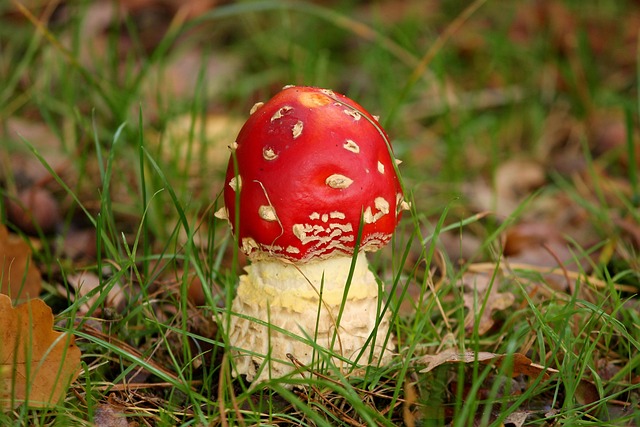
When it comes to exploring mind-altering substances, understanding their edible properties and safety measures is paramount. While some plants and fungi have been used for centuries in ritual and medicinal contexts, like the well-known Amanita Muscaria, it’s crucial to approach them with caution. The Amanita Muscaria, often referred to as the Fly Agaric, has been part of various cultural practices due to its psychoactive compounds. However, not all parts of this fungus are safe for consumption; only specific varieties, prepared correctly, should be considered edible.
Safety measures include thorough research and identification, ensuring proper preparation techniques, and understanding individual tolerances. Consuming the wrong type or preparing it incorrectly can lead to severe health issues. It’s essential to consult experts, use reliable sources, and never consume wild fungi without expert guidance. Always remember that while some substances may have potential benefits, they also carry risks, especially when altering one’s mind through ingestion.
Potential Benefits and Therapeutic Applications
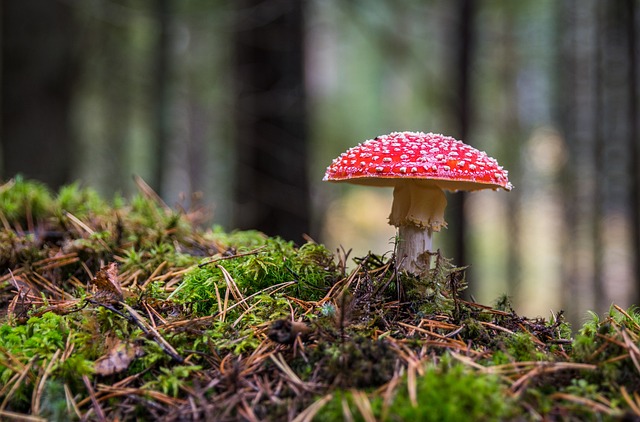
The mind-altering properties of certain substances, including those found in some fungi like the Amanita Muscaria, have long been a subject of fascination and controversy. While these effects can be potent, there is growing interest in exploring their potential benefits for therapeutic applications.
Research suggests that specific compounds within these mushrooms may hold promise in treating various mental health conditions. The stimulant and hallucinogenic properties could aid in psychotherapy by enhancing creativity, promoting altered states of consciousness for self-reflection, and potentially providing new perspectives to help individuals process trauma or cope with anxiety and depression. Moreover, studies on the edible Amanita Muscaria indicate that its active compounds might have anti-inflammatory and neuroprotective effects, offering possible avenues for research in neurology and psychiatry.
Risks and Side Effects: Navigating the Dangers

The mind-altering effects of certain substances, while intriguing, come with inherent risks and side effects that cannot be overlooked. One such example is the use of Amanita Muscaria, commonly known as Fly Agaric or Magic Mushroom. While some promote its edible properties, it’s crucial to understand the potential dangers. These mushrooms contain psilocybin, a compound known for its psychedelic effects, which can induce altered perceptions, hallucinations, and intense emotional experiences.
However, these experiences are not without risks. They may include adverse reactions, anxiety, paranoia, and in rare cases, severe psychological distress. Long-term effects are also unknown, especially with regular or excessive use. Navigating these dangers requires caution and informed decision-making. It’s essential to approach such substances with respect and understanding, recognizing that they might not be suitable for everyone or every situation.
